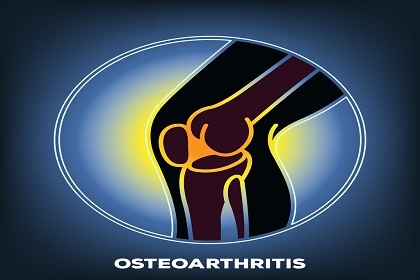Search
Shoulder pain is a common problem, usually caused by strains and sprains of the soft tissues surrounding the shoulder joint. In most cases, the pain gets better with simple treatments you can do at home.
What is shoulder pain?
Three bones (the upper arm bone, the shoulder blade, and the collar bone) join to form your shoulder. These bones fit into sockets with cartilage, muscles, and tendons protecting the joints (see image).
This structure gives your shoulder a wide range of motion. Pain develops when any of the soft tissues or bony structures are over-extended or injured.
What causes shoulder pain?
The cause of shoulder pain depends on how the pain began and where it is felt. Acute pain after an injury is usually caused by muscle or tendon strains or tears (most commonly a "rotator cuff injury"). Pain in the shoulder not due to an acute event often begins gradually and may come and go. This type of pain can have many causes, including:
• Tendon, ligament or muscle strains
• Chronic tears (rotator cuff)
• Inflamed bursae (bursitis)
• Arthritic changes damaging the cartilage or causing impingement and inflammation
Fractures of the bones of the shoulder (arm, collar, shoulder blade) are uncommon because it requires significant trauma to break a shoulder bone. However, older people and people with osteoporosis can develop fractures with less trauma.
How is shoulder pain treated?
Most shoulder pain can be controlled with simple home treatments.
• Rest and activity changes:
○ Avoid any movement that causes pain.
○ Avoid moving your arm higher than chest level.
○ Do not lift, carry, or pull heavy objects.
○ Sleep on the non-painful side with a flat pillow under your armpit to protect the shoulder that hurts.
○ If recommended, use a sling to immobilize your shoulder for a few days.
• Ice:
○ To help reduce pain and swelling, apply ice (wrapped in a towel or sealed in a plastic bag) 3-5 times a day for 15-30 minutes. Use ice for the first 1-2 days or until pain and swelling subside.
• Pain medicine:
○ In most cases, over-the-counter pain relievers such as acetaminophen (Tylenol), ibuprofen (Advil, Motrin), or naproxen (Aleve) are enough to control shoulder pain. Prescription medicines are rarely needed and can cause side effects.
Do I need X-rays or other imaging tests to help diagnose shoulder pain?
It is not in most cases. Your clinician can usually tell what is causing your shoulder pain. He/She can rule out less common causes based on your medical history and physical exam.
Does exercise help relieve shoulder pain?
The exercise that promotes range of motion and strengthens the shoulder can help speed the healing process. Once pain and swelling begin to ease, you can try a gentle pendulum exercise. The motion shouldn't cause pain (see Figure).
Codman (pendulum) exercises
Do this exercise for 5-10 minutes, 3-4 times per day. Move gently at first.
• Bend over from the waist
• Let the sore arm hang loosely
• Swing in forward-back, side-to-side, and circular patterns if this causes pain, stop doing it.
Do I need to see a physical therapist or doctor who specializes in shoulder pain?
The simple treatments described above help most people get better. People with severe pain and swelling, or symptoms that aren't improving after 2-4 weeks, may be referred to a physical therapist. Most physical therapies are given several times a week for a few weeks with subsequent home exercises.
For people with chronic shoulder problems due to arthritis, bursitis, or tendonitis, a steroid shot into the painful area by an orthopedic surgeon or arthritis specialist can provide relief while the natural healing process takes place. For pain that was not improving and thought due to a rotator cuff injury, referral to an orthopedic surgeon is appropriate.
What can I do to prevent shoulder pain from coming back?
Exercises can help maintain range of motion and strengthen the shoulder muscles.
Your clinician can give you instructions for exercises to prevent and treat shoulder pain. Brisk walking and/or swimming are also good activities to help prevent shoulder pain. You can make simple changes in your daily routine, such as:
• Avoid tucking your phone between your ear and shoulder when you talk. If you are on the phone a lot, use a headset.
• Take frequent breaks at work. Shrug your shoulders up and down. Pull your shoulder blades together, and then relax. Pull your shoulders down while leaning your head to each side to stretch your neck muscles.
• Lift and carry the right way. When you are lifting something, bend at your knees, keeping your back neutral, and your head and shoulders up. Avoid carrying bags on one shoulder for a long period. Use a cross-body bag or a backpack-style bag to distribute weight more evenly- and be sure to wear the backpack correctly with both arms through the shoulder loops.
This document is intended to provide health-related information so that you may be better informed. It is not a substitute for your care team's medical advice and should not be relied upon for treatment for specific medical conditions.
2017 The General Hospital Corporation.
Primary Care Office InSite
Developed by the MGH Laboratory of Computer Science and Division of General Internal Medicine
Click the link for more information on Emergency Medicine Clinical Service
Click the link for more information on Family Medicine Clinical Service
Click the link for more information on Orthopaedics and Sports Medicine Clinical Service
Click the link for more information on Rehabilitation Clinical Service











